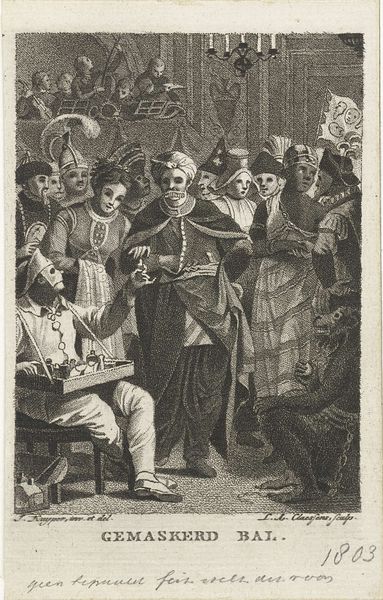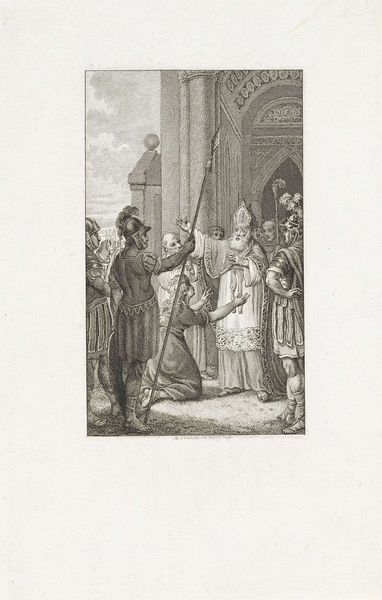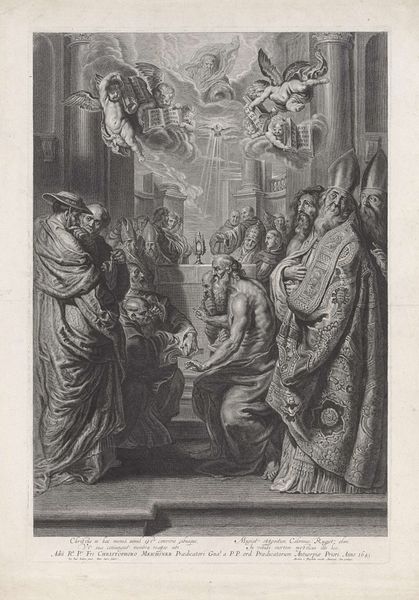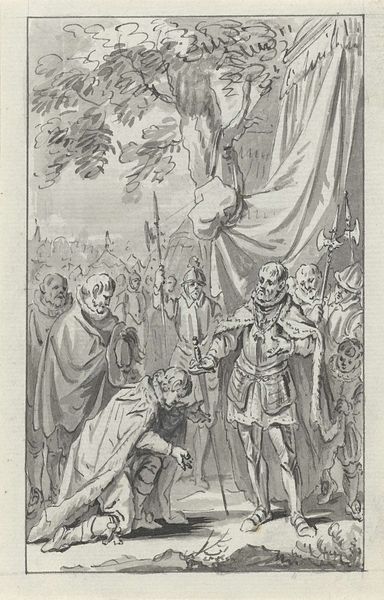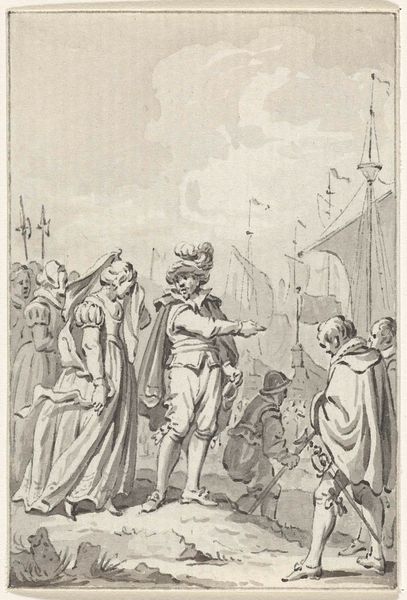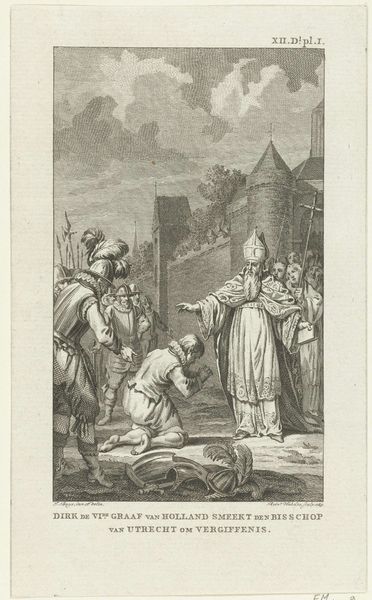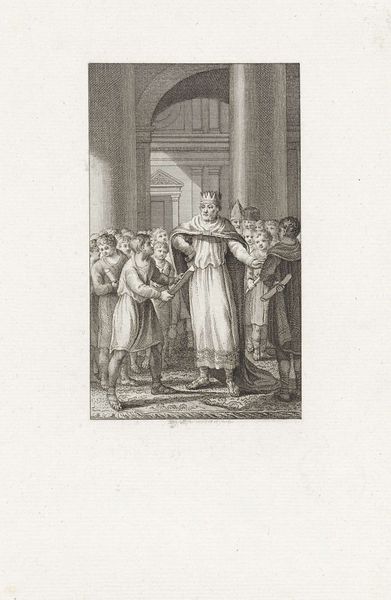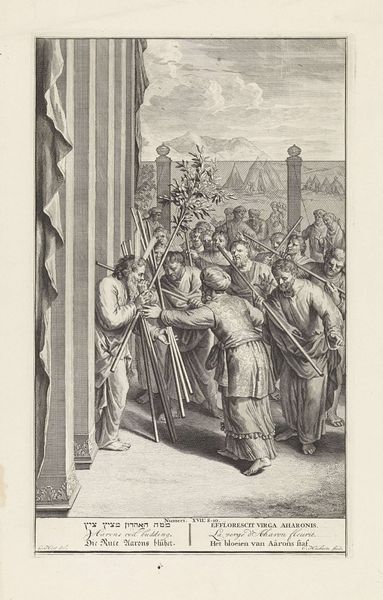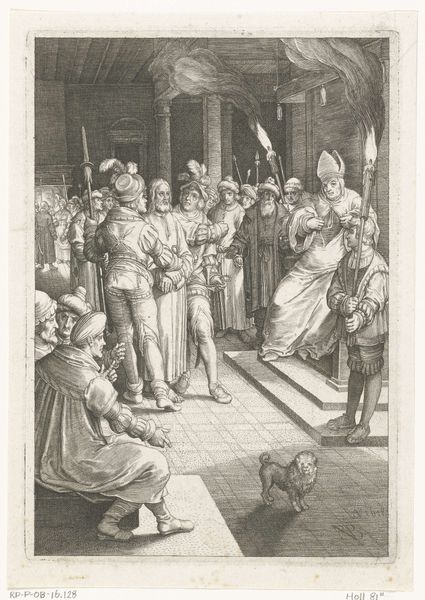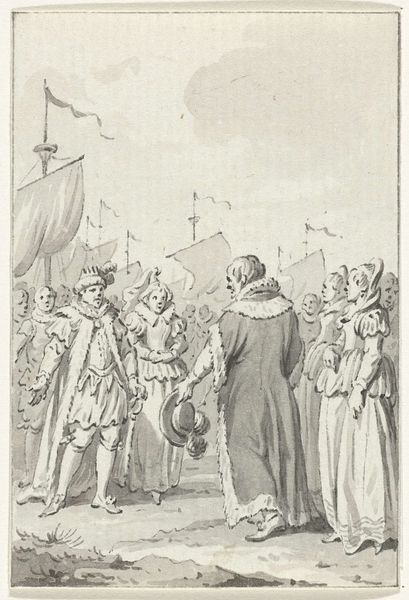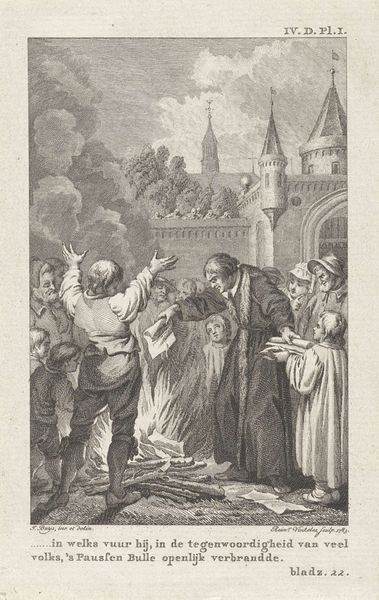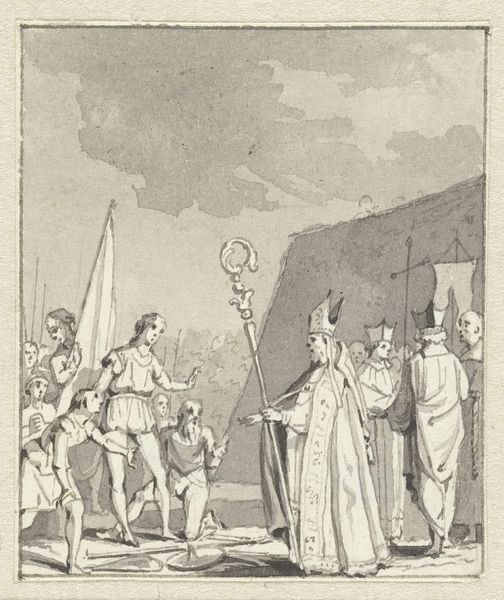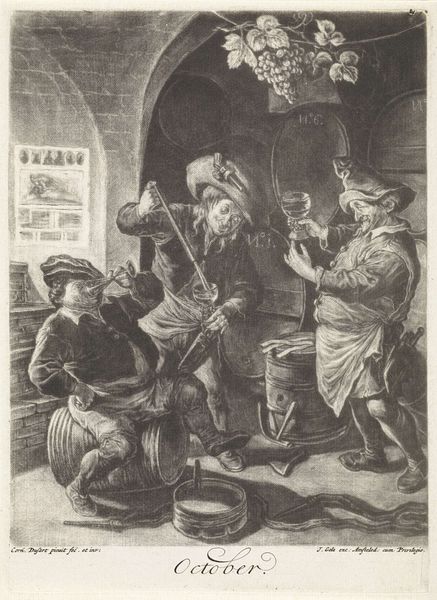
print, engraving
#
portrait
#
neoclacissism
#
narrative-art
# print
#
old engraving style
#
history-painting
#
academic-art
#
engraving
Dimensions: height 115 mm, width 85 mm
Copyright: Rijks Museum: Open Domain
Curator: This engraving, made around 1800 by Lambertus Antonius Claessens, is titled "Taalkundig experiment van farao Psammetichus," which translates to "Linguistic experiment of Pharaoh Psammetichus." Editor: My initial impression is one of staged drama. The composition is rigidly structured, almost theatrical, with strong contrasts of light and shadow highlighting the central figures. Curator: Absolutely. The academic approach evident here seeks to represent history, but also embodies a specific power dynamic and historical viewpoint. The image presents the pharaoh as a central authority, literally and figuratively at the center, with implications about cultural authority in general. Editor: The figures are rendered with incredible detail. Note how each face seems to convey a distinct emotion and personality, achieved through a sophisticated manipulation of line and shading. Observe also the texture of their garments and the various ornamental features such as the pharaoh's headwear and necklace, contrasting with the simplicity of the wanderer's bare feet. Curator: Yes, and it's important to note how that perceived individuality reinforces hierarchies. The "experiment" depicted draws on ancient Greek sources that report Pharaoh Psammetichus' attempt to discover the original language by isolating children and observing their first words. This raises issues about colonialism, linguistic dominance, and who gets to define knowledge and truth. Editor: Indeed. And these concerns over societal authority are reinforced through the medium of print; the neat lines of the engravings speak to a desire for reason to rule through structure and order. Note how the artist even takes pains to create a distinction between the architectural spaces in the background versus the characters. Curator: Viewing this through a contemporary lens, we might ask: Whose voices are amplified, and whose are silenced? And how do historical narratives, like this visual representation of Psammetichus’ experiment, contribute to ongoing power imbalances? Editor: Focusing on the more technical side, there’s something to be said about how effectively the artist manipulated light and shadow to create volume and depth on the blank canvas; its tonal control makes this a classic Neoclassical piece. Curator: Examining "Taalkundig experiment van farao Psammetichus," for me it illuminates the complexities of history-telling and prompts us to think critically about whose perspectives are privileged. Editor: And for me, it’s an instructive example of skillful deployment of tonal contrast and rigid structure.
Comments
No comments
Be the first to comment and join the conversation on the ultimate creative platform.
